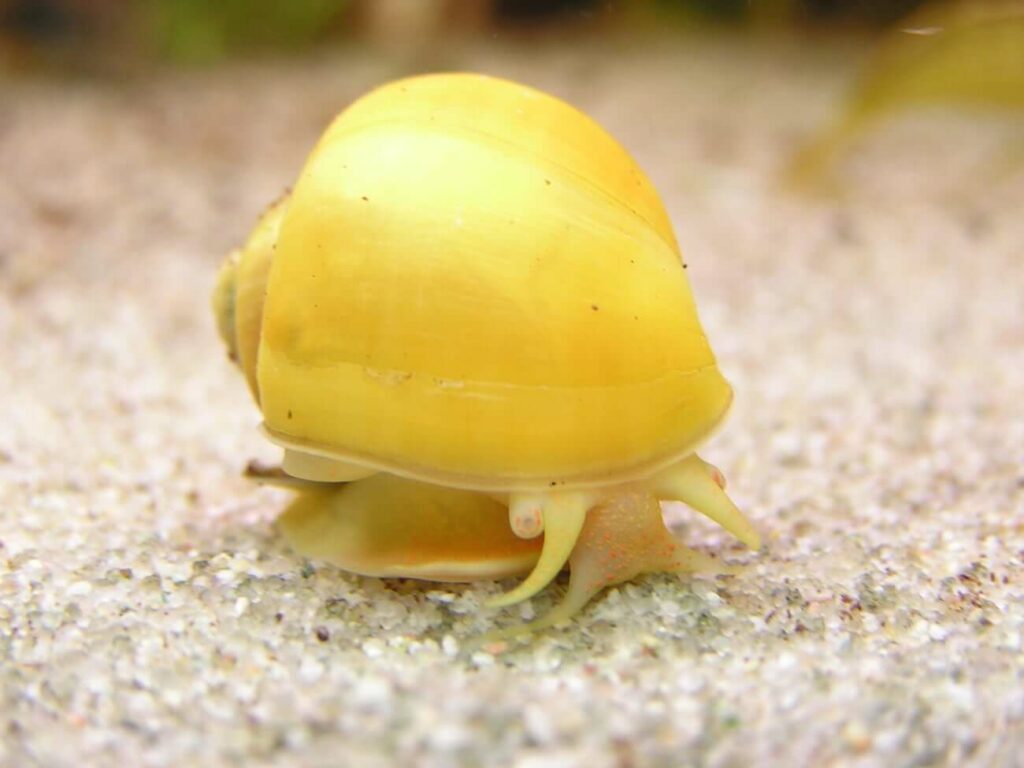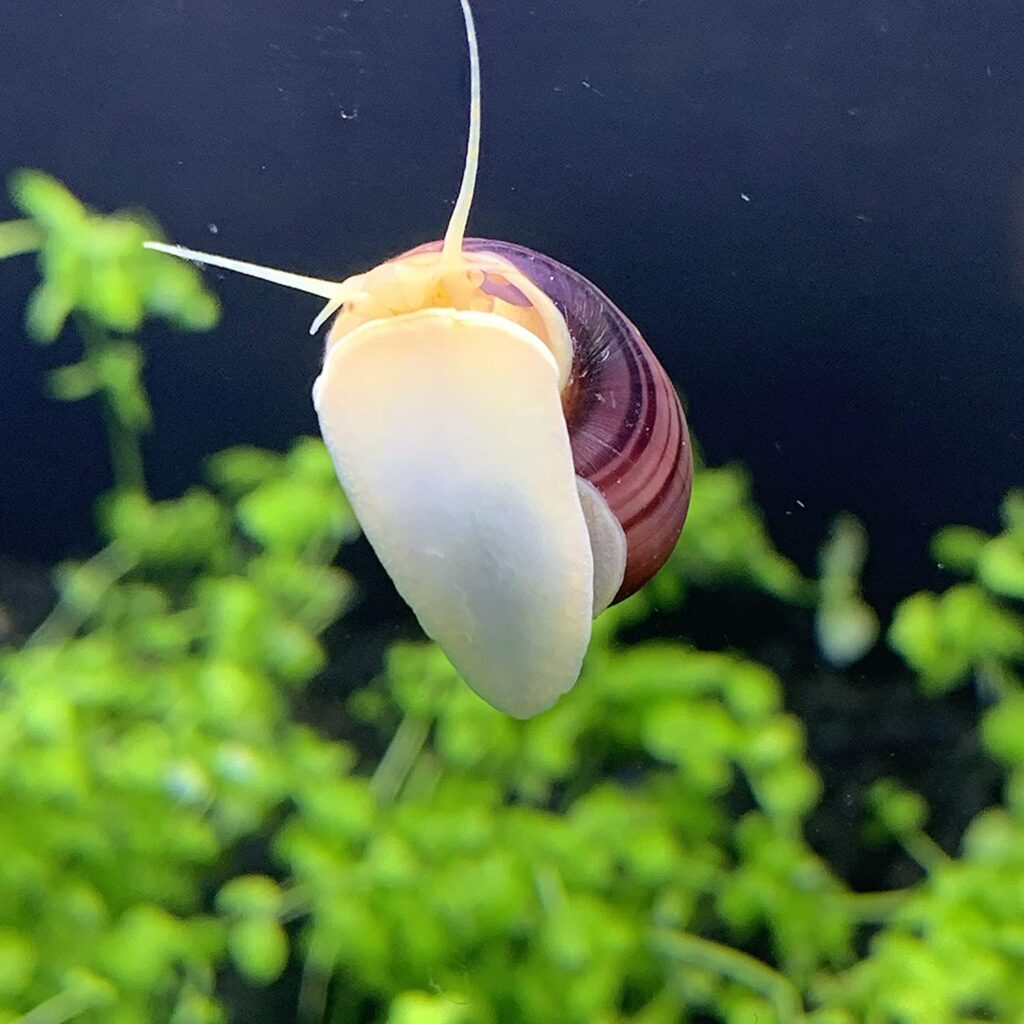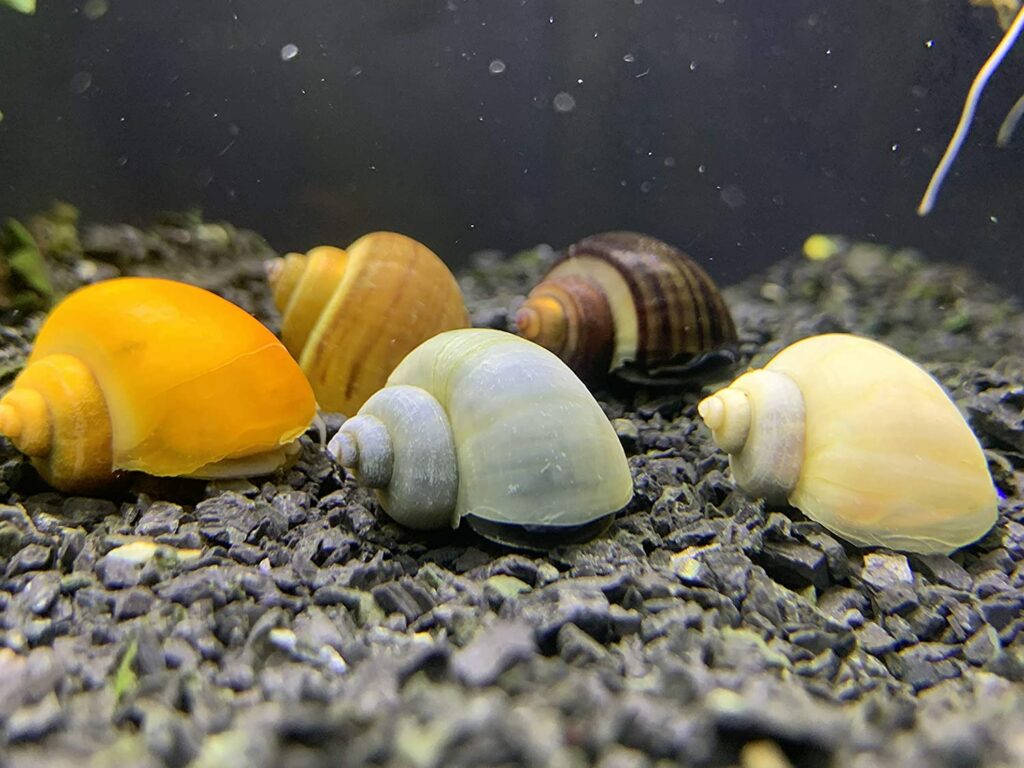Calcium is an essential mineral needed by all living organisms. This nutrient is commonly associated with strong bones and teeth but it’s interesting to know that boneless and toothless mystery snails also need calcium supplements to maintain their overall health.
Unlike humans that can easily take a variety of calcium supplement products, mystery snails heavily depend on the availability of calcium from the water. Meanwhile, captivated snails may also get their dose of calcium from the food you give.
That becomes the question, why is it important to fulfill the calcium needs for mystery snails? How to give calcium to your pet snails? If similar questions pop in your head, you’ve come to the right page. We’ve gathered useful information to get to know about calcium for mystery snails.
Sources of Calcium for Mystery Snails

In the wild, mystery snails commonly inhabit calcium-rich environments with a favorable pH. In the tank, it is your task to provide them with balanced nutrients, including calcium. Every snail owner must ensure there are enough sources of calcium for the pet.
There are two main sources of calcium from snails, including:
1. Food
Calcium-rich food helps ensure your mystery snails get enough minerals. There are different options of food to feed the snails, such as cuttlebone and green veggies. Cuttlebone has an excellent amount of calcium that helps avoid brittle shells in snails.
Green veggies like soybean, zucchini, and kale are also rich in calcium, making them a great option to nourish the shell. Common veggies such as basil and cabbage are also found effective to provide calcium in the tank.
2. Water
Another source of calcium for your snails is water. Ensuring there’s enough calcium can be a bit daunting. However, it is still the best source for snails living in the tank. Water mineralization is one of the ways to maintain calcium content and pH balance in the water.
Benefits of Calcium for Mystery Snails

Snails need calcium to strengthen their shells. The demand for calcium in snails is even higher when compared to shrimp. The shells mainly consist of calcium carbonate even up to 95%. Constant and sufficient calcium intake keeps the shells stay strong, allowing them to hide from predators.
Mystery snails’ shells protect their soft bodies and internal organs. The strong shells have calcified layers ranging from two to five, ensuring maximum coverage and protection. When predators attack, their soft bodies get into the strong shells so that they remain safe.
When snails lack calcium, some shell issues may be starting to appear. The most common problem caused by calcium deficiency is eroded or cracked shells, holes, and whitish color. When you notice these issues, you’d want to provide snails with sources of calcium.
How to Give Calcium to Mystery Snails

Now that you know the importance of calcium for mystery snails, it’s time to learn how to give it into the tank. There are different methods to add calcium but the easiest way is to use calcium-rich food. If you want to get to know more, check out the following list.
1. Find Pure Sources of Calcium
First thing first, you’ll want to find pure sources of calcium for mystery snails. There are plenty of calcium supplements for mystery snails available on the market, but it is important to pick ones from an organic source. That means anything you add to their diet must be healthy and contain other nutrients.
Store-bought calcium supplements are typically easier to digest, making them an ideal choice for your pet snails. Not to mention they are commonly packed with other nutrients needed to thrive. Make small research before picking a calcium supplement on the market.
2. Change Water Frequently
Depending on the hardness of your water, a frequent water change may be able to provide sufficient calcium in the tank. Ideally, about 25% of the water should be changed bi-weekly to make sure it has a good level of calcium. But be sure to check the calcium level beforehand.
Identifying hard water is quite simple. If you find scummy showers or tubs that are hard to clean, it’s enough to say that your water is hard. Or if you see white curst around the showerhead and faucets, the water may have a sufficient amount of calcium.
3. Add Cuttlebones
Cuttlebones are an excellent source of calcium. These large interior shells from cuttlefish contain 85% calcium, making them a great choice to add calcium to the tank. They are widely available, inexpensive, and easily dissolve in the water.
Having that said, you have to be mindful when using cuttlebones. Despite the advantages they have, cuttlebones produce a foul odor when they’re left for too long. They are also very large so you will want to break them into smaller pieces.
4. Add Corals
How to add calcium to mystery snails can be performed by adding corals. Not only does it provide your snails with enough calcium, it also works amazingly to decorate your aquarium. You can choose either live corals or ground coral substrate.
Other Sources for Calcium

There are many other sources of calcium to give to your pet snails. You may want to try this calcium-rich stuff:
1. Calcium Blocks
Made from concentrated calcium that is pressed into a block, this calcium source ensures calcium levels in the tank. Compared to cuttlebones, they dissolve faster and last about 2 weeks. It also contains magnesium that’s also needed by snails.
What’s great about calcium blocks is that they can give an immediate impact on the tank. If you notice calcium deficiency in snails, adding these blocks can be the best action to take.
2. Crushed Oyster Shells
Oyster shells contain a high amount of calcium. That said, it also has a significant amount of salt so it should be used sparingly in your freshwater aquarium. Adding crushed oyster shells is an effective way to add calcium to your tank.
3. Liquid Calcium Chloride
There are several liquid calcium chlorides on the market, providing you with the convenience to add calcium. However, these products can be costly and they may also cause alkalinity drop. Before adding it to your fish tank, be sure to dissolve it into the water.
4. Calcium Reactor
Some snail owners use calcium reactors to provide their pets with enough amount of calcium. It has several parts, such as calcium carbonate, carbon dioxide, solenoid valve, and pump. These reactors help control not only calcium levels but also magnesium levels and alkalinity.
The reactors can be placed alongside the sump in the tank. It takes in carbon dioxide and dissolves carbonate to release minerals.
5. Antacid Tablets
Feeding your snails antacid tablets is another way to add calcium into their environment. Adding these tablets can change water color once they dissolve but it offers an efficient solution for tanks with low calcium.
6. Kalkwasser
Kalkwasser is a type of liquid made from a combination of RO water and calcium hydroxide water. It helps increase pH balance as well as calcium levels. Kalkwasser can be an inexpensive solution that doesn’t produce a foul smell.
How to prepare this calcium source is quite simple. Simply add water and it’s ready to put into the tank. But be careful because the powder is hazardous when inhaled.
Calcium supplements for mystery snails are essential to meet the demand for this nutrient. Snail owners can choose from a long list of calcium supplements, such as cuttlebone, green veggies, and calcium blocks.



